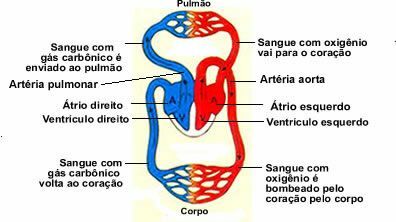Gregor Johann Mendel (1822-1884) was an Augustinian monk well known for his work involving peas. Currently recognized as the founder of genetics, Mendel managed to elucidate how the characteristics were transmitted from parents to children at a time when there was no knowledge about cell division nor the structure of the DNA. Unfortunately Mendel did not have his work recognized in his lifetime, but, without a doubt, his results were essential for the development of genetics.
Read too: Basic concepts in genetics
Who was Gregor Mendel?
Johann Mendel was born in July 20, 1822, at Moravia, which until then was part of the Austro-Hungarian Empire and was later incorporated into the Czech Republic. Son of a farmer couple, Mendel did not have a life of great luxuries and had few resources to invest in his education. At 21 years of age, he joined the Monastery of the Order of St. Augustine, in the city of Brunn (today called Brno), with the aim of achieving the right conditions to continue his studies. It was in the monastery that Johann was baptized Gregor.
At the monastery, Mendel carried out a range of educational activities and had access to a wide range of books from the local library. The naturalist and abbot Franz Cyril Napp was his mentor during this period, and in 1851 he decided to send his pupil to a two-year internship at the University of Vienna, where he studied physics, mathematics and natural history. Undoubtedly, this stage was essential for the development of his work, as he was able to expand your knowledge of experimentation and mathematics..

When Mendel returned to Brunn, he taught at a local school and, thanks to Napp, who built a large greenhouse, continued his studies begun in Vienna. Several works were carried out by Mendel, but the most important of them, and which ensured the researcher's recognition, was the study carried out with peas (Pisum sativum). His results were presented in two sessions at the Brunn Natural History Society, in 1865, and published, in 1866, in her annals.
Despite being a work widely known nowadays, its recognition only took place 35 years after its publication, when European researchers (Hugo de Vries, Carl Correns and Erich Tschermak-Seysenegg), independently, rediscovered the study when looking for bibliographies to support their own ideas about heredity. Mendel even sent his work to many of his peers, including Charles Darwin, but received no attention. Mendel died on January 6, 1884, before having its due recognition.
Do not stop now... There's more after the advertising ;)
Mendel's Laws
In the monastery where he lived, Mendel carried out his famous studies with peas, which took about seven years to complete.
In his work, the researcher analyzed seven plant characteristics: seed shape, seed color, pod shape, pod color, plant height, flower color, and flower position on the plant. Mendel carried out crosses and analyzed the descendants very carefully and following scientific criteria. too mathematically analyzed its results, at a time when this association between mathematics and biology was not common.

In his time, there was no knowledge of processes such as meiosis and mitosis, DNA and chromosomes, and he, however, was able to understand that there were factors that guaranteed heredity, even without knowing such processes. Mendel published his works in the year 1865, but they were not immediately recognized.
Initially, he performed crosses with peas analyzing only one trait. This analysis led to the formulation of the now known Mendel's First Law. Subsequently, he analyzed more than one characteristic in each cross, this analysis being responsible for his second law. See below the statement of each of these propositions:
- Mendel's First Law or Law of Segregation of Factors: each character is determined by a pair of factors that segregate in the formation of the gametes, in which they occur in a single dose.
- Mendel's Second Law or Independent Segregation Law: the factors that determine different characters are independently distributed to the gametes and combine at random.
By Vanessa Sardinha dos Santos
Biology teacher



